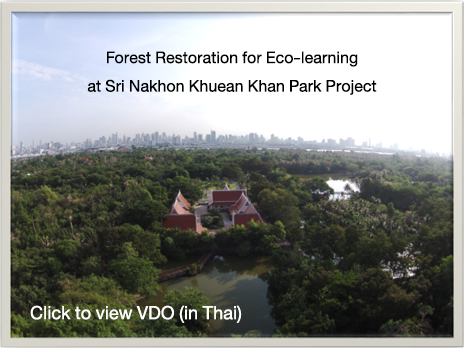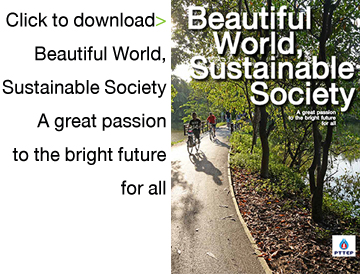The Forest Restoration for Eco-learning At Sri Nakhon Khuean Khan Park Project

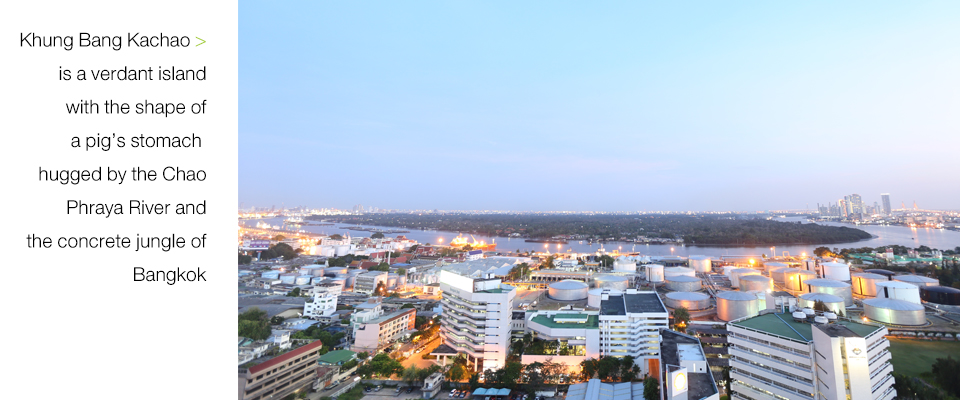
This 11,000-rai green area was lauded by Time magazine in 2006 as "The Best Urban Oasis of Asia" — the key word is "oasis", the "lungs" that produce oxygen for the city of seven million people for nine months in a year thanks to seasonal winds. In the face of global warming and its worldwide impact, the area helps trap over 6,000 tons of carbon dioxide per year, according to a 2011 Study by Thailand Greenhouse Gas Management Organisation (Public Organisation) and Kasetsart University's Faculty of Forestry.
But our natural lungs have deteriorated due to the torrents of change pressing in around them.
Between 1982 and 1987, His Majesty King Bhumibol Adulyadej often rode in a helicopter over Bang Kachao. His Majesty remarked that the spot should be preserved as a green area and the lungs of the city.
The Environmental Impact Evaluation Bureau, under the Ministry of Science, Technology and Environment, purchased 564 plots of abandoned farmland covering an area of 1,276 rai. In 2003, 148 rai were turned into a public and botanical park. His Majesty gave it the name "Sri Nakhon Khuean Khan Park", after the ancient name of the place. It has been under the continual supervision of the Office of Royal Projects, Department of Forestry.
In 2008, Her Royal Highness Princess Maha Charki Sirindhorn visited Khung Bang Kachao and said: "Let's preserve this green area. Do not build anything beyond the limits of the law. Promote integrated farming and forests. Every party should take part in the renovation of Sri Nakorn Khuean Khan Park to ensure the necessary benefit for tourism and create a natural classroom for young people".
In 2013 PTTEP, with its commitment to environmental preservation through socially responsible projects, began working with the Chaipattana Foundation, the Office of Royal Projects, the Department of Forestry, Kasetsart University's Faculty of Forestry and other related agencies, and launched the Forest Restoration for Eco-Learning at Sri Nakhon Khuean Khan Park Project for 13 years (2013-2025). The project encompasses the improvement of walking paths, signs and exhibitions to support studies in nature and biodiversity. Eventually, these steps which will run until 2025 will lead to forest restoration and ecosystem improvement.
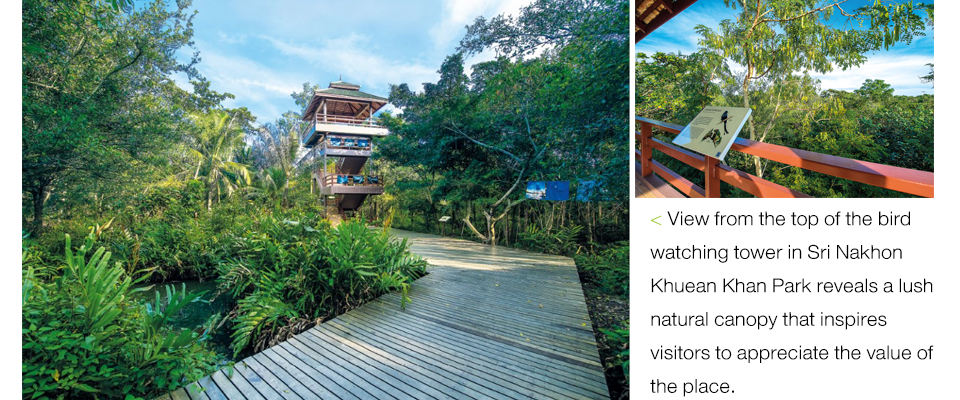

The mouth of the canal, with an influx of brackish water coming in from the sea during high tide, enriches the expanse of mangrove forests, one of the three ecological systems that characterize this green pig's stomach. Meanwhile in the low-lying plains deeper inland, was once a freshwater swamp forest where rainwater was trapped during the monsoon season and dried up in summer, has been turned into fruit orchards and irrigation canals. Lastly, the high plains in the middle of Bang Kachao which was once a rainforest has been converted into farmland and residential areas.
After studying the terrain, the water channels and the plants, the 40-rai plot is divided into three restoration areas. The project requires planting new species in the existing areas, monitoring their natural growth until they fit into the structure of biodiversity and finding an equilibrium within one another.
Besides collecting data on the growth of plants, the project also collects data on carbon sequestration and degradation of leaves, since it is the first step in the cycle that improves the quality of soil and allows small creatures such as earthworms to become part of the food chain and improves the biodiversity.
Result of the continuous monitoring by Faculty of Forestry, Kasetsart University in last 4 years demonstrates that biodiversity in these 3 forests has been increased i.e. the average biomass of mangrove forest is increased to 16.14 tons per rai or 57.2% increase, the average biomass of freshwater swamp forest is increased to 11.83 tons per rai or 21.7% increase and the average biomass of rainforest is increased to 11.53 tons per rai or 20.6% increase. As per the monitoring result, the number of plant species has increased from 90 in 2014 to 118 species in 2017 or 31.1% increase.
At least 101 species of native wildlife have been identified. Birds in the area are both native species and migratory birds. Sri Nakhon Khuean Kan Park is an important location for bird watching.
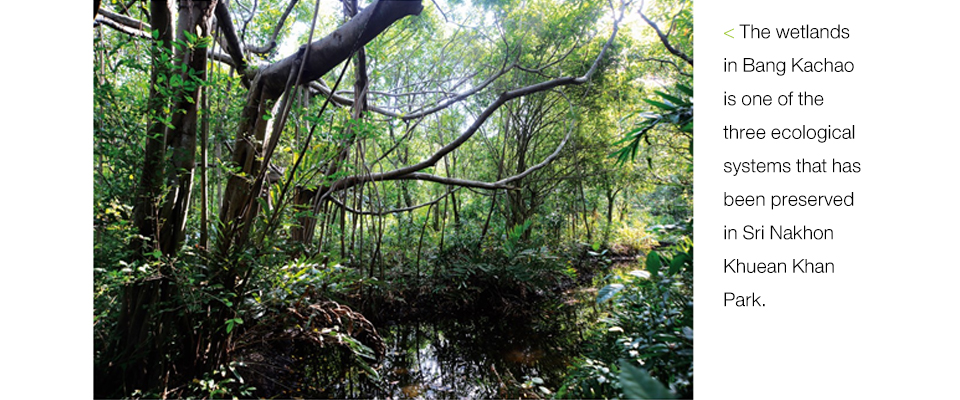
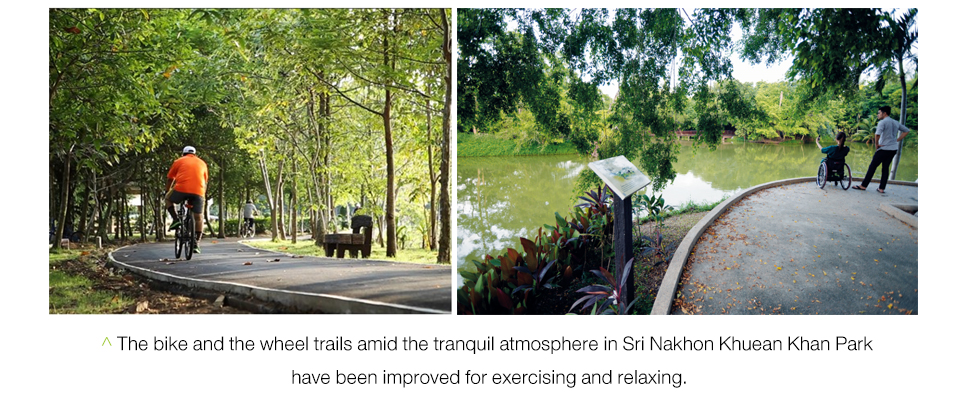
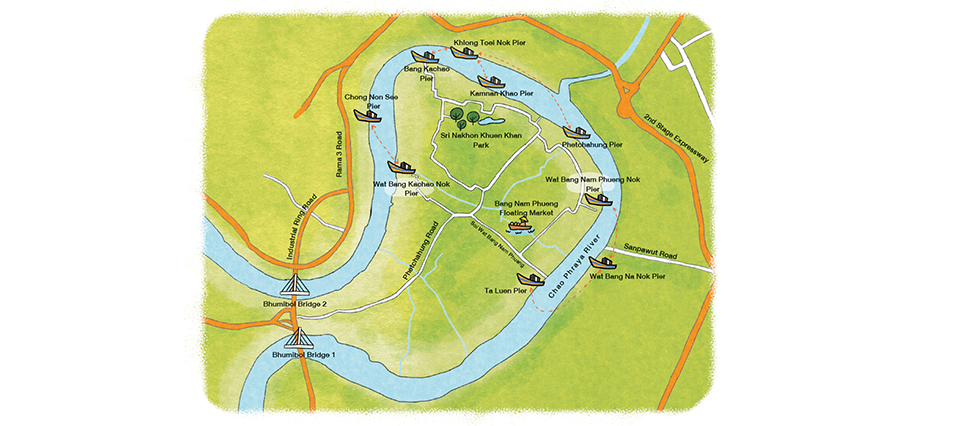
Bang Kachao sub-district, Phra Pradaeng district, Samut Prakan 10130
Tel. 0-2461-0972
Website: www.suansri-bangkachao.com



 ...the sea has become our home and so we are conscious of our responsibilities...
...the sea has become our home and so we are conscious of our responsibilities...




 PTTEP is E&P company in Thailand, exploring for sustainable sources of petroleum for the countries we operate
PTTEP is E&P company in Thailand, exploring for sustainable sources of petroleum for the countries we operate
 SIGN IN
SIGN IN SEARCH
SEARCH
